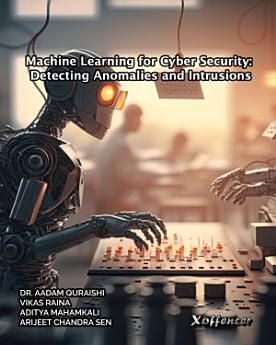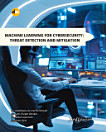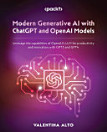MACHINE LEARNING FOR CYBER SECURITY DETECTING ANOMALIES AND INSTRUSIONS
About this ebook
About the author
Manoj Ram Tammina MD, MBA has research and development roles involving some combination of NLP, deep learning, reinforcement learning, computer vision, and predictive modeling. He is actively leading team of data scientists, ML researchers and engineers, taking research across full machine learning life cycle - data access, infrastructure, model R&D, systems design and deployment
Vikas Raina is presently Associate Professor, Department of Computer Science Engineering, School of Engineering and Technology, Mody University of Science and Technology, Lakshmangarh, Sikar, Rajasthan-a NAAC A+ awarded University. He obtained his PhD Degree from School of Engineering and Technology. Mody University of Science and Technology in 2018. He has published numerous research papers in reputed ESCI, WoS and SCOPUS Indexed International journals. He has published one patent, book and granted one patent
Aditya Mahamkali an accomplished Associate at Goldman Sachs, is a trailblazer in the field of computer science. With a solid academic foundation from the prestigious Virginia International University and currently pursuing a Doctor of Information Technology degree at the University of Cumberlands, Aditya's relentless pursuit of knowledge is evident. His passion for research and innovation is showcased through the publication of four impactful papers, including two research papers and one review paper, all of which have received the prestigious Best Paper award. Aditya's commitment to pushing the boundaries of computer science is further demonstrated by his active engagement with industry experts at an esteemed International Conference in Singapore. As a member of ISSCA Dallas (ISACA ID 1921326), Aditya not only excels in his professional endeavors but also inspires colleagues and peers with exceptional leadership skills, fostering an environment of innovation and continuous learning. His unwavering commitment and intellectual prowess make him a beacon of inspiration within his community. At Goldman Sachs, Aditya's leadership skills contribute to the company's success and drive the development of cutting-edge IoT products and services, pushing technological x boundaries and delighting clients. Aditya Mahamkali is a true visionary in the world of computer science, leaving an indelible mark on the industry
Arijeet Chandra Sen MTech (Software Systems), MSc, B.Tech. & having over 17 years’ professional work experience in a wide gamut of functional areas of Communication Technologies, Information Technology, Critical Infrastructure Development, Risk assessment and management, Cyber Security, AI and other emerging niche technologies. Currently working with Government of India and holding multiple Indian and foreign pending patents. A keen researcher with sound exposure to emerging trends and happenings in the Cyber Security, AI and Data Science Fields.








